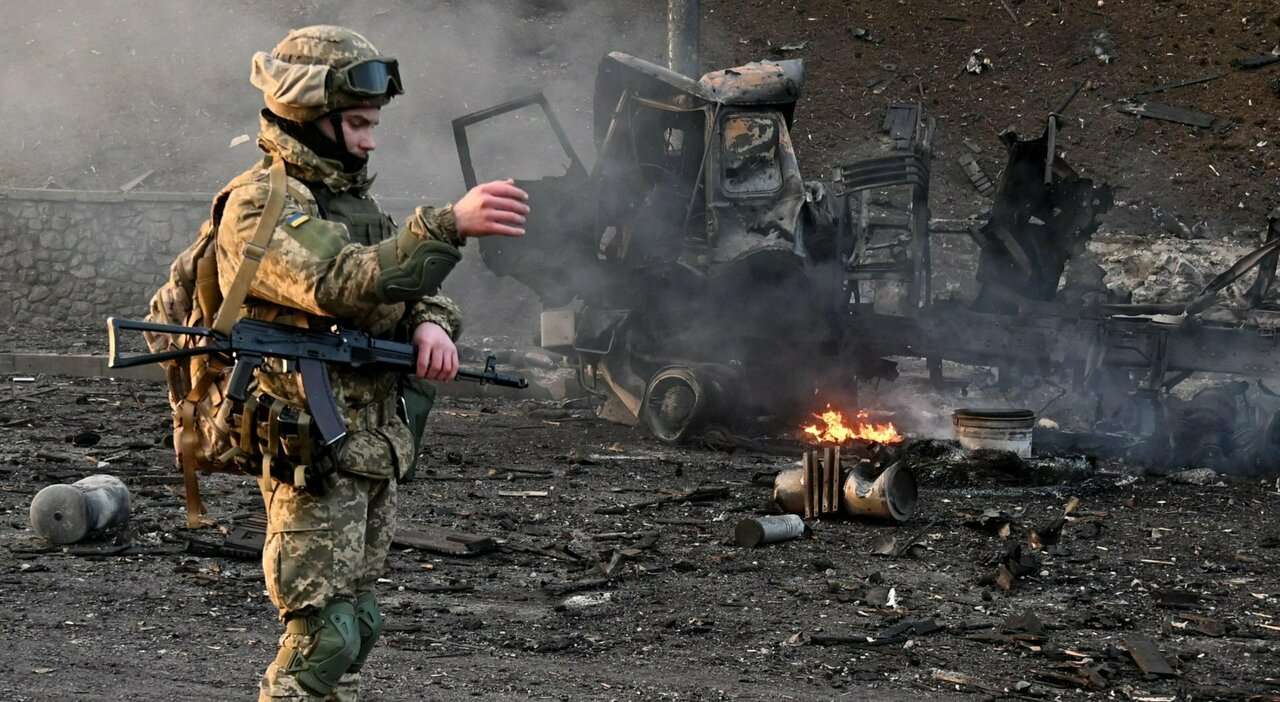In a controversial move amid concerns over Ukraine’s military standoff with Russia, President Biden has sanctioned the supply of U.S. cluster munitions to Ukraine. Despite an internal U.S. ban on such munitions with a failure rate exceeding 1 percent, these will be drawn from existing Defense Department stocks. This development arrives amidst heightened apprehension about Ukraine’s slowing counteroffensive and the depletion of Western conventional artillery stocks.
 by Michael Scurry
by Michael Scurry
In a move likely to stir significant debate, President Biden has given the go-ahead for U.S. cluster munitions to be provided to Ukraine, circumventing the U.S. law that forbids the production, usage, or transfer of such weapons if they have a failure rate of more than 1 percent. This decision comes at a time of growing anxiety over Kyiv’s sluggish counteroffensive against embedded Russian forces and the decreasing stockpiles of conventional artillery from the West.
The supply of these contentious weapons, which are prohibited by most nations globally, ends months of internal deliberations within the Biden administration. Cluster munitions, when deployed, explode in mid-air over the intended target and scatter numerous smaller submunitions over a vast area.
Over 120 countries, citing the high failure rates that scatter unexploded submunitions posing a risk to both military personnel and civilians, have endorsed a convention banning these weapons as inhumane and indiscriminate. However, neither the United States, Ukraine, nor Russia, the latter allegedly employing them extensively in Ukraine, are party to this convention. Furthermore, eight of NATO’s 31 members, including the U.S., have not ratified this convention.
The primary weapon being deliberated is an M864 artillery shell, first manufactured in 1987, that is compatible with the 155mm howitzers previously supplied to Ukraine by the U.S. and other Western nations. In its last publicly accessible estimate from over two decades ago, the Pentagon assessed this artillery shell to have a “dud” rate of 6 percent. This implies that at least four of the 72 submunitions contained in each shell could remain unexploded over an area roughly the size of 4½ football fields.
However, the Pentagon now claims to have new evaluations, based on tests as recent as 2020, showing failure rates no higher than 2.35 percent. Even though this exceeds the annual 1 percent limit mandated by Congress since 2017, officials are opting for munitions with the 2.35 percent dud rate or lower for transfer to Ukraine, according to Pentagon spokesperson Brig. Gen. Patrick Ryder.
President Biden plans to bypass Congress and the 1 percent limit on cluster munition failure rates, which has been integrated into Defense Department appropriations for the past seven years. He intends to utilize a rarely employed provision of the Foreign Assistance Act, which allows him to provide aid irrespective of appropriations or arms export restrictions, as long as it aligns with vital U.S. national security interests.
Though the U.S. has deployed cluster munitions in every major war since the Korean conflict, it is believed that no new ones have been manufactured for several years. Nonetheless, estimates from Human Rights Watch based on Defense Department reports suggest that approximately 4.7 million cluster shells, rockets, missiles, and bombs, containing over 500 million submunitions, or bomblets, still exist in military stocks.
Nonproliferation experts suggest that the Pentagon’s 2.35 percent dud rate likely pertains to aging shells with updated fuses to enhance their self-destruction capability. However, the actual data is inaccessible without official testing information. Critics of cluster munitions usage assert that the lower dud rates are the outcome of tests conducted under idealized and unrealistic conditions that don’t reflect real-world scenarios.
Ukrainian Defense Minister Oleksii Reznikov stated this week that obtaining a significant supply of these weapons has become vital for Kyiv’s ongoing counteroffensive. The U.S. and other Western donors have dispatched millions of non-cluster howitzer shells to Ukraine, but stocks are depleting, and manufacturing cannot meet the demand.
The provision of these weapons has generated controversy within the Biden administration, with some members denouncing their use due to the high rates of unexploded ordnance, posing a significant risk to civilians. Despite this, the administration has begun to soften its stance on supplying cluster munitions as the scarcity of standard artillery munitions intensifies.
The U.S. military has long regarded cluster munitions as an effective battlefield weapon. However, their usage also carries substantial drawbacks, including the potential risk of unexploded ordnance endangering the forces deploying them, and the subsequent challenges of clearance in post-conflict scenarios. The decision to supply these munitions to Ukraine will continue to prompt intense debate on their humanitarian implications and strategic value in modern warfare.
(Associated Medias) – All right reserved
